Most of the tourist routes start from the Moscow Kremlin, an ancient fortification in the center of the capital and one of the symbols of Russia. The first wooden structure between the rivers Moscow and Neglinnaya was built in the 13th century. Around the fortification, thanks to its favorable location, the city began to grow. Later, wooden buildings were replaced by stone ones. Today, behind the red brick walls is not only the government residence, but also a huge museum complex with an area of 38 hectares.
Archaeological excavations are still underway on the territory, revealing new facts about the past of Russia. Among the most visited and interesting objects of the Kremlin are the Armory Chamber and the Diamond Fund, the Arkhangelsk, Assumption and Annunciation Cathedrals - the snow-white masterpieces of Russian temple architecture, crowned with golden domes, the Faceted Chamber is one of the oldest civil buildings in the capital. The Ivan the Great Bell Tower, built in 1508, overlooks Cathedral Square. Near the bell tower are the famous Tsar Cannon and Tsar Bell. The Patriarch's Palace houses the Museum of Art and Life of the 17th century. And for many years the Church of the Deposition of the Robe served as a home church for the patriarchs. Each building and object of the Kremlin preserves an ancient and exciting history: through them you can touch the past of Russia and, in part, the whole world.
Address: Moscow Kremlin, Moscow, Russia.
The Red Square
The answer to the question of what to visit in Moscow after the Kremlin suggests itself: the next key tourist milestone is Red Square. The most important historical events unfolded here, peaceful demonstrations and military parades took place. The square has repeatedly changed its name, having visited Trinity (after the name of the church) and "Fire" (due to the abundance in the past of wooden buildings, often on fire). Red, that is, "beautiful", she became in the 17th century. The area is surrounded by landmarks. Opposite the Kremlin is the GUM building, formerly called the Upper Trading Rows.
On the north side is the Historical Museum. Near the walls of the Kremlin - Lenin's Mausoleum. And on the south side of the square is the next attraction, one of the three must-see objects - the monument to Minin and Pozharsky.
Address: Red Square, Red Square, Moscow, Russia.
St Basil's Church
The pearl of the architectural ensemble of Red Square. The official name of the temple is the Cathedral of the Intercession of the Most Holy Theotokos on the Moat. And Basil the Blessed was the name of the Moscow holy fool, who worked miracles and possessed the gift of foresight. His remains are buried under the shroud of the temple. The building was built by order of Ivan the Terrible in honor of the annexation of the Kazan Khanate. According to legend, the ruler ordered to blind the architect who designed the temple so that such a masterpiece could not be repeated by anyone. The cathedral unites eleven churches (chapels), some of which are consecrated in honor of the saints, whose days of memory fell on the decisive battles for Kazan. The central church was built in honor of the Intercession of the Virgin, around which individual churches are grouped. The height of the temple is 65 m: for a long time it remained the tallest building in the capital.
Address: St. Basil's Cathedral, Red Square, Moscow, Russia.
State Historical Museum
A beautiful red building, similar to a fairytale tower, invariably attracts the attention of tourists. It was built in 1881 by order of Alexander II specifically for the needs of the museum. The huge exposition includes about 4.5 million items; some are centuries old. The exhibitions occupy 39 rooms and tell the history of Russia from the inception of statehood among the Slavs to the beginning of the 20th century. For the convenience of visitors, there are information stands and interactive monitors everywhere, where you can look at fragile exhibits that are not exhibited in the halls. The museum conducts classes for schoolchildren, historical events; research circles work.
Address: State Historical Museum, Red Square, Moscow, Russia.
Central Park of Culture and Rest. M. Gorkogo
The park was founded in 1928, and four years later it was named after the writer Maxim Gorky. Already in the 30s, it was among the favorite places for walks of Muscovites. The park remains this way to this day, but today its territory is also noticeably landscaped. We cleared ponds, equipped a wooden beach, arranged comfortable seats, provided free Wi-Fi and sockets for charging gadgets. Bicycles and scooters are rented on the territory, lessons of salsa, yoga, fine arts are given. Festivals and cultural events take place. Sitting in silence is unlikely to work: the park is always crowded, lively and fun, especially in summer.
Address: Central Park of Culture and Rest. M.Gorkogo, Krymskiy Val street, Moscow, Russia.
Sparrow Hills
It is believed that the name of the attraction on the right bank of the Moskva River owes its name to the priest Voroby, who owned the territory. Even then Vorobyovy Gory became a place for walks of the Moscow nobility. In the middle of the 18th century, Moscow State University was founded here, contributing to the popularity of the territory and its improvement. Now along the coast there is a walking area with benches. In the wooded part there are wooden pedestrian decks and stairs, which are convenient for walking. Plants rare for the region grow here, areas for feeding birds and animals are equipped. In winter, there are ski slopes on the slopes, and a ski lift is open all year round. And from the wide observation deck, the picturesque shores, skyscrapers and temples of Moscow open up at a glance.
Address: Vorobyovy Gory, Kosygina street, Moscow, Russia.
Arbat
In the 18th century, Arbat Street was inhabited by Moscow aristocrats - Sheremetevs, Tolstoy, Golitsyn. At the end of the 19th century, it began to lose its high-society appearance: shops, restaurants opened, and intellectuals settled. Now Arbat is perhaps the most famous street in the capital, where history is intertwined with the rhythms of the modern world. For example, at the Prague restaurant Lev Tolstoy read out fragments of his novels. Famous cultural figures lived here: Tsvetaeva, Balmont, Derzhavin. More modern objects are the monument to Bulat Okudzhava and the Tsoi Wall. Arbat is a pedestrian area: performances are held here, street artists work, souvenirs are sold, in this place the spirit of old and new Moscow merges into one.
Address: Arbat Street, Moscow, Russia.
Exhibition of Achievements of the National Economy (VDNKh)
The Exhibition of Achievements of the National Economy - VDNKh - opened in 1939. As conceived by the creators, it was supposed to be an advertisement for the socialist regime. The stalls were housed in buildings built in the pre-Soviet era, and represented the achievements of the economy of the republics of the USSR. Now on the territory of the exhibition, in addition to shopping pavilions, attractions, museums and exhibition grounds, monuments, an oceanarium, a rose garden, the Green Theater and park areas are located. Visitors go ice skating, rollerblading, bicycles, gyro scooters, and try their dexterity in the rope park. Fresh air, a pleasant atmosphere, an abundance of entertainment - that's why VDNKh should definitely be included in the list of what to see in Moscow.
Address: Exhibition of Achievements of National Economy (VDNKh), Prospekt Mira, Moscow, Russia.
State Tretyakov Gallery
The millionaire philanthropist Pavel Tretyakov bought the first paintings for his incomparable collection in 1856. In 1892 he donated the building with the entire exposition to the city. Today the collection includes over 1300 paintings by Russian masters - from the inception of Russia to the beginning of the 20th century: Repin, Surikov, Vereshchagin. The creations of artists of the 20th century are presented in the New Tretyakov Gallery: in it you can admire the works of Kandinsky, Chagall, as well as the famous "Black Square" by Malevich. There are exhibitions of young artists, a workshop and a lecture hall, which can be attended by both adults and children.
Address: State Tretyakov Gallery, Lavrushinsky Lane, Moscow, Russia.
Nikolskaya street
The pedestrian street is considered one of the oldest in the city and attracts tourists with its atmosphere and abundance of entertainment. The buildings of restaurants, cafes and shops alternate with old architectural masterpieces. Among the interesting buildings on Nikolskaya is the former Printing House, where the first book in Russia, "Apostle", was published. Nearby is the Ferreina Pharmacy, which has existed since the late 19th century and is housed in a spectacular Art Nouveau building. The former hotel "Slavyansky Bazar", which flourished in the pre-revolutionary era, deserves attention. On the street there are monasteries and former tenement houses. And at the end of the route - on Red Square - the Kazan Cathedral rises, founded in 1625.
Address: Nikolskaya Street, Moscow, Russia.
Cathedral of Christ the Savior
The main cathedral of Russia was built after the victory over Napoleon and in memory of the fallen soldiers. According to the architects' idea, it was supposed to surpass even St. Peter's Cathedral - the heart of the Vatican. At first, they wanted to build a temple on Vorobyovy Gory, but the coastal soil would not have withstood the stone massif. Therefore, it was erected in the center of Moscow. In Soviet times, the shrine was blown up, and in its place was a pool; the temple was restored in the 90s. Now the patriarch of the Russian Orthodox Church himself conducts divine services here. The height of the monumental structure in the Russian-Byzantine style is 103 m, the capacity is 10 thousand people. The main shrines are particles of the vestments of Christ and the Mother of God, the Nail of the Cross of the Lord, parts of holy relics, miraculous scrolls of icons.
Address: Cathedral of Christ the Savior, Volkhonka Street, Moscow, Russia.
The Bolshoi Theatre
The history of the center of the capital's cultural life began in 1776. But three buildings in a row, which housed the theater, burned down. The familiar building appeared in the middle of the 19th century. During the Great Patriotic War, party congresses were held there, and no performances were given. The theater survived the war, despite a direct bomb hit. After that, he underwent a series of reconstructions, during which the exterior and interior decoration were tried to return to their historical appearance. Now on the stage are performances, concerts of pop artists, ballet performances. The attraction is popular not only among Russians, but also foreign tourists, so you need to take care of tickets a few months before arrival.
Address: Bolshoi Theater, Teatralnaya Square, Moscow, Russia.
Moscow City
The business districts of New York and London were the inspiration for the creation of the Moscow business center. In the Moscow City complex, all buildings are designed in ultramodern styles - high-tech and neo-constructivism; the number of floors - from 27 to 96. There are only 16 high-rise buildings, each with its own name. There are observation platforms from where you can look at the city, other towers and the river. The townspeople themselves travel to Moscow City for work and business; tourists - on excursions and shopping. The complex is especially good in the evening, sparkling with lights like the megalopolises of Asia and the USA: at this time it is better to admire it from the other side of the river.
Address: Moscow City, Presnenskaya nab., Moscow, Russia.
Natural landscape park "Zaryadye"
Founded in 2017, Zaryadye Park has rapidly grown into an attractive Moscow tourism destination. 14 billion rubles were allocated for the construction of the complex. The investment paid off: immediately after the opening, impressive queues began to gather at the entrance to Zaryadye. The park is divided into terraces: each has its own vegetation, corresponding to a certain natural zone. The flora of the tundra, taiga, steppes, swamps is found here; many plants are quite rare. The most interesting objects are the U-shaped bridge - in fact, an observation deck, an amphitheater, a concert hall, a media center. The park gives the impression of being well-groomed and located close to the main attractions, which adds to its popularity.
Address: Zaryadye Park, Moscow, Russia.
Ostankino TV tower
At the time of construction in 1967, the Ostankino TV tower was the tallest structure in the world: its height is 540 m. The reinforced concrete structure stands practically without a foundation, maintaining stability due to a heavier foundation. From the two observation platforms located in the tower, you can look at the city: the spectacle is impressive at any time of the year or day. Below the observation deck, at a height of 334 m, there is the Seventh Heaven restaurant. It occupies three floors, each of which rotates slowly, giving visitors the opportunity to admire the panorama of the capital while dining. Also, guests of the tower can examine it in detail from the inside, get acquainted with the technical structure of the object.
Address: Ostankinskaya TV Tower, Academician Korolev Street, Moscow, Russia.
The Armory and the Diamond Fund
The Armory is a real treasury of the Kremlin. There are 4 thousand objects of jewelry and weapons art: items made of precious metals, works of Faberge, different types of armor and horse harness, medals and awards, church and secular clothing, including the robes of the kings. The best works of jewelers are exhibited at the Diamond Fund of the Armory. The exhibits represent both domestic and foreign craftsmanship: for example, there is a collection of Western European silver. Preserved here are precious stones, nuggets, as well as symbols of imperial power - the crown, orb and scepter.
Address: Armory Chamber, Moscow, Russia.
Alexander Garden
The garden began to be created in 1820. The author of the project was Bove, who had previously participated in the restoration of Moscow destroyed by Bonaparte. Now in the Alexander Garden you can not only take a pleasant walk in the shade of trees, but also get acquainted with interesting objects. One of them is the Italian grotto, designed by the creator of the garden himself and full of deep meaning. White columns protruding from the ruins are a symbol of the city's rebirth. Other points of interest are the Tomb of the Unknown Soldier with the Eternal Flame and the monument to Patriarch Hermogenes, famous for resisting the Polish invasion during the Time of Troubles.
Address: Alexandrovsky Garden, Moscow, Russia.
Cathedral of the Archangel
The snow-white cathedral, consecrated in honor of the Archangel Michael, became the resting place of the great Moscow princes, starting with Ivan Kalita and ending with the first Romanov. It is believed that Kalita built it to thank the gentlemen for the disaster that passed; which one is unknown. The temple is five-domed: the central dome is golden, the surrounding ones are smaller and silvered. Under Ivan the Terrible, the walls were decorated with frescoes, but later the interior was updated, and little of them remained. The main temple attraction is the necropolis. The relics of the rulers of Russia are placed in strict order and covered with tombstones and sarcophagi. Pilgrims can worship only the relics of Tsarevich Dmitry.
Address: Archangel Cathedral, Moscow, Russia.
State Museum of A.S. Pushkin
The museum, founded in 1957, is a large complex, which, in addition to the main museum of A.S. Pushkin, includes the Memorial Apartments of Pushkin and A. Bely, the Turgenev Museum and the Exhibition Hall in Denezhny Pereulok. The core of the collection is exhibited at the Khrushchev-Seleznyov estate, erected after the war with Napoleon. The interior decoration has been preserved, allowing guests to immerse themselves in the atmosphere of the early 19th century. The exhibition is located in 15 rooms. The exposition includes historical documents and household items that give an idea of the life of the early 19th century. The halls are dedicated to different periods of the poet's life, starting with his studies at the Tsarskoye Selo Lyceum, as well as individual works, for example, "The Queen of Spades" and "Eugene Onegin". The museum also contains Pushkin's original autograph, his manuscripts and letters.
Address: State Museum of A.S. Pushkin, Prechistenka street, Moscow, Russia.
Moscow river
The first settlements on the banks of the Moskva River appeared in the Bronze Age. For centuries it has inspired creative people with its beauty; films are made about her, songs are dedicated. The channel is deep and wide enough, and there are many attractions on the banks, therefore motor ships and river trams are constantly running along the river. Those who wish can go on an excursion with an entertainment program, take wonderful pictures from the ship. River walks are especially pleasant in the evening, when the banks shine with lights and illuminated buildings.
Address: Moskva River, Russia.
Novodevichy Convent
The order to build a monastery complex in honor of the return of Smolensk was given by Vasily III. The name is explained in different ways: according to one version, on the field where the monastery stands, maidens were selected to be sent to the Mongol-Tatars as tribute. According to another, the monastery was for women, and the root "new" was added so as not to be confused with another. The Novodevichy Convent was considered privileged: only noble girls were sent to it. They sent here, by order of Peter I, and Princess Sophia, and then his first wife Evdokia Lopukhina. Now there is an art museum on the territory of the complex. The exposition includes ancient Russian paintings and old icons, precious items and fabrics, historical documents and books. And at the Novodevichy cemetery such figures as Chekhov, Levitan, Gogol, Khrushchev, Yeltsin, Lyubov Orlova are buried.
Address: Novodevichy Monastery, Novodevichy proezd, Moscow, Russia.
Moscow subway
Almost every station of the Moscow metro is a piece of art. The best stations are Komsomolskaya, Kievskaya, Oktyabrskaya, Novoslobodskaya, Taganskaya, and Revolution Square. Marble finishes, sculptures, stucco moldings, mosaic panels and heavy lamps transform them into fabulous underground palaces. Not only old, but also modern stations are interesting: Rasskazovka, Fonvizinskaya, Govorovo, Elektrozavodskaya, Maryina Roshcha, decorated with the latest technology. The Moscow Metro is a real museum under the feet of citizens and guests, combining historical heritage with the achievements of progress. Address: Komsomolskaya, Moscow, Russia.
Lomonosov Moscow State University
The university complex includes over 600 buildings, but the most famous is the Stalinist skyscraper on Vorobyovy Gory. The building has 36 floors, between the 23rd and 28th - the Museum of Geosciences with an extensive collection of minerals. Moscow State University, founded in 1755, is one of the oldest and most prestigious universities in the country, with 43 faculties and over 300 departments. Notable former students include Herzen, Lermontov, Balmont, Mikhail Gorbachev and Andrei Malakhov. Guided tours are held at Moscow State University, and on the 32nd floor there is an observation deck with an impressive view of the city.
Address: Lomonosov Moscow State University, Leninskie Gory Street, Moscow, Russia.




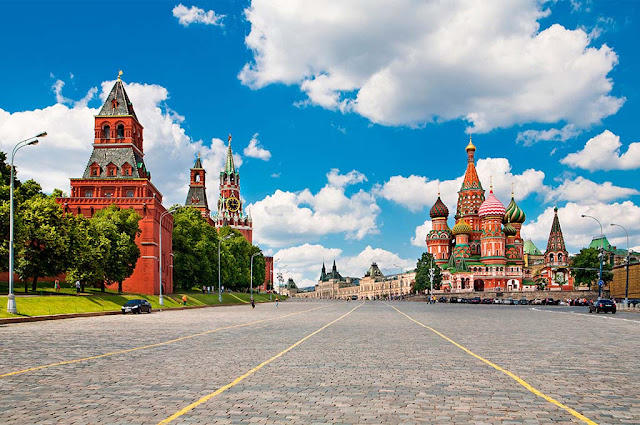
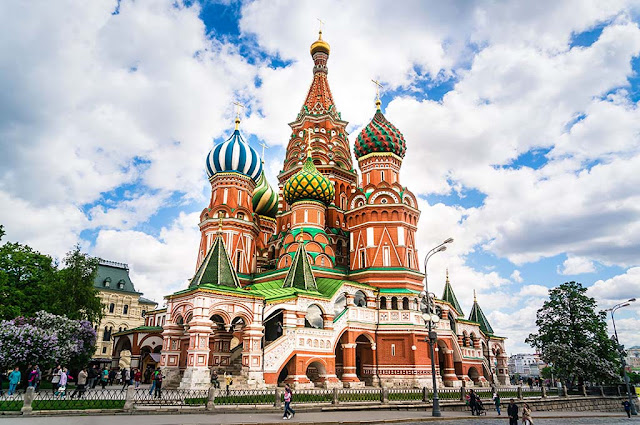

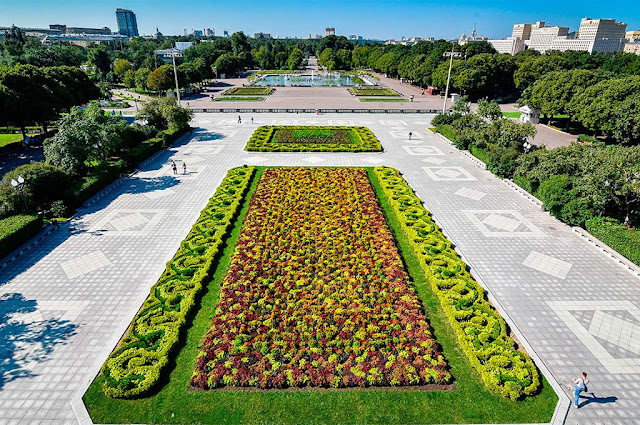

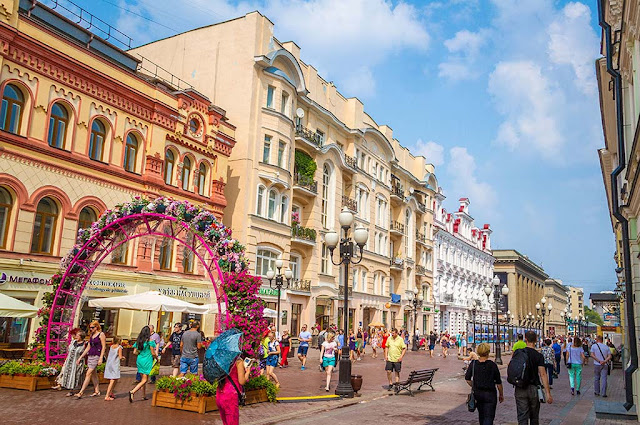



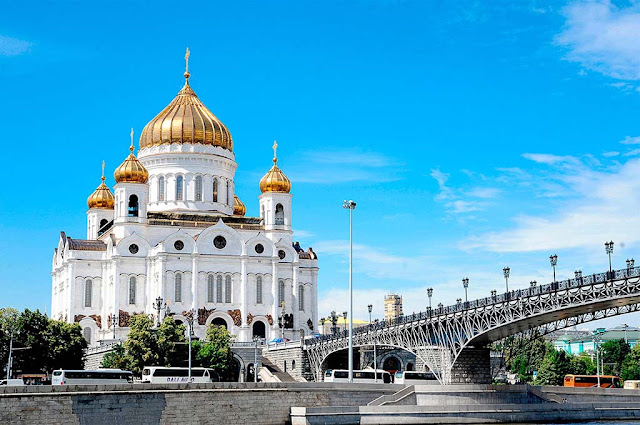

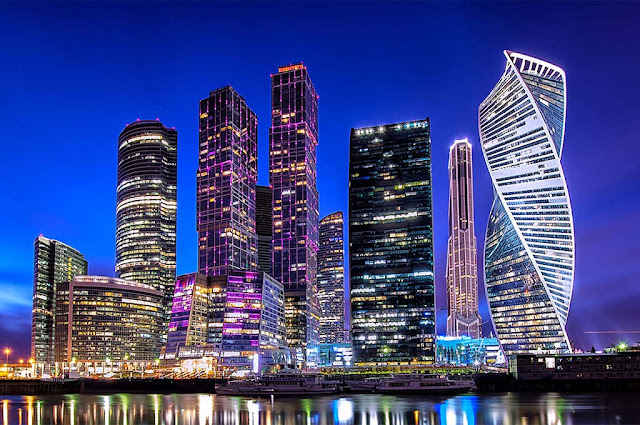
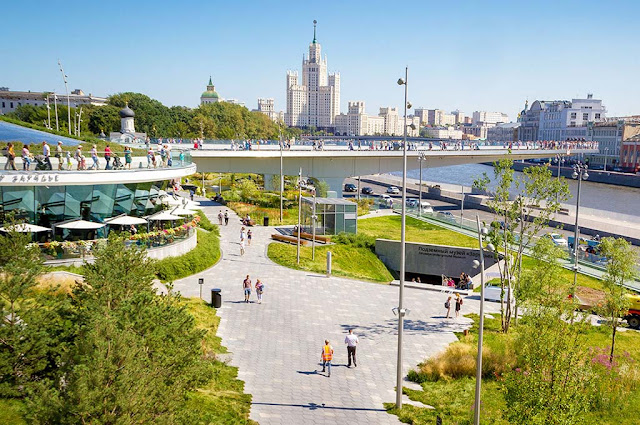
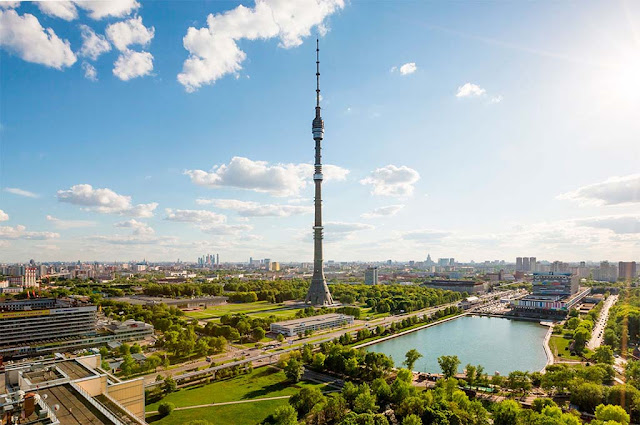













0 Comments